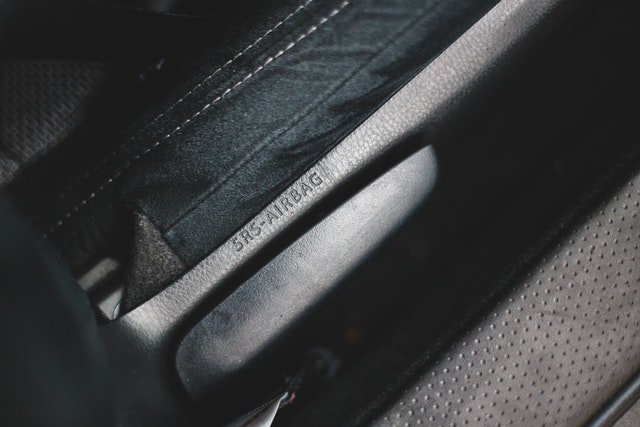The airbag is an important vehicle component, and it must be tested to ensure it meets the manufacturer’s standards. In the case of an accident, the airbag must be able to inflate correctly in order to absorb the force of an impact.
In this guide, we’ll go over how airbags work and how they get tested to better understand the science behind it.
How Do Airbags Work?
Airbags are designed to protect you from the impact from a vehicle, whether a car or a motorcycle.
The airbag itself is an inflatable bag, like a balloon. It contains all sorts of chemicals and other non-toxic materials that are harmless in small quantities but can have a strong chemical reaction when combined together.
The reaction is similar to the process of combustion, but it does not produce fire or smoke. It’s a chemical combustion process. The reaction produces carbon dioxide, which builds up pressure in the inflatable sack. The bag inflates quickly and is able to absorb the impact of a crash.
The airbag inflates in the blink of an eye, so the passenger can be spared any serious injuries. The entire process of inflation and deflation takes less than a second.
Who Tests Airbags?
Manufacturers test airbags in various ways. The tests are generally done in a lab by professionals.
The manufacturers test the airbags on the machines that simulate a vehicle crash. The machines are able to step on the gas and brake the car for the airbags to inflate. After the airbag is deployed, the machine will clean the airbag and send it to an inflatable-bag-disposal facility.
How Are Airbags Tested?
1) Folding, Ignitor, and Gas Tests
Airbags are tested to ensure they are safe, reliable and do not pose any risk to the driver and the passenger. Before the bag is installed in the car, the packaging for the airbag must be tested extensively to ensure it remains intact and that it deploys properly.
2) Deployment Time Tests
The airbags are also tested to ensure they inflate in a timely manner. If the airbag takes too long to inflate, then the passenger could be injured.
3) Crash Tests
Airbags are also tested to ensure they deploy correctly when the car hits a bump or a curb. These tests are conducted by crashing the car into a wall that simulates an impact.
4) Homologation Tests
Homologation tests are also conducted to ensure the airbag is deployed correctly in different kinds of accidents. All manufacturers must comply with the standards of the country or states where the car is sold.
What to Do If Your Airbag Needs to Be Reset?
If your airbag is not deploying correctly, you should take the car to a car repair shop. The mechanic will check the airbag to ensure it is working correctly. The car repair technician will check the sensor and make sure it is working properly.
If the sensor needs to be replaced, the car repair technician will perform the necessary repairs. If the sensor does not need to be replaced, the technician will reinstall the airbag and make sure it is functioning correctly.
Conclusion
Knowing how airbags work and what is used in testing is important. You can ask your mechanic to explain the science behind these devices if you want to get a better understanding. It’s important to know how airbags are tested to protect you from a vehicle accident.
If you want to learn more about airbag deployment and restoration, Safety Restore can help. We have all the resources to help you with airbag module reset and more. Get in touch with us to learn more.

